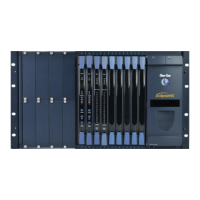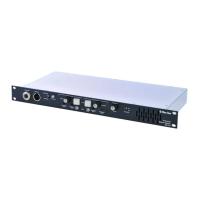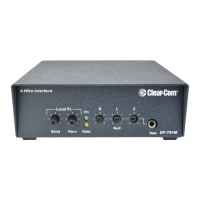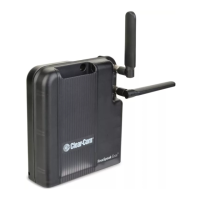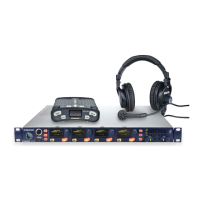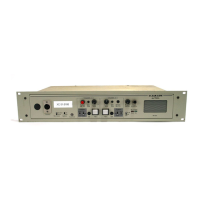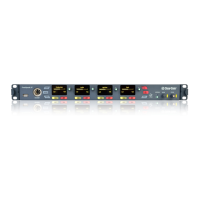Alarm I/O Connector
The DB-9F connector labeled Alarm I/O connects the matrix to
a control circuit for an external alarm, such as a light or bell.
The external alarm activates whenever an alarm condition is
detected in the matrix.
The following conditions trigger an alarm:
If any of the voltages produced by the first power supply
unit fall below their normal levels.
If any of the voltages produced by the second power
supply unit fall below their normal levels.
If an external alarm circuit or other logic circuit connected
to the power supply is activated.
If either of the two power-supply unit fans stop operating.
If software on a master CPU card generates an alarm.
An alarm condition activates the relay contacts connected to
pins 4, 5, and 9. These contacts are “dry”, (no voltage is
supplied to them by the matrix) and are rated at 1 A at 24
VDC. They should not be used for AC mains line current.
Pins are provided for adding an additional alarm source to the
matrix’s alarm system. Pin 6 is an alarm input to the Eclipse
HX-Median matrix. It is connected to the input of a 3.3 V logic
device.
A logic high on this input will cause the Eclipse HX-Median
matrix to detect an alarm condition. A logic low or an open
circuit means that the matrix will not detect an alarm condition.
Pin 1 is a voltage source out of the Eclipse HX-Median matrix. It
is connected through a 10Kohm pull-up resistor to the +5 V
supply rail inside the Eclipse HX-Median matrix.
A contact closure placed across pins 1 and 6 will also cause an
alarm condition.
Tip: The alarm outputs of the PSU-101 power supply could be
wired directly to these pins allowing the CPU card to report PSU
failures also.

